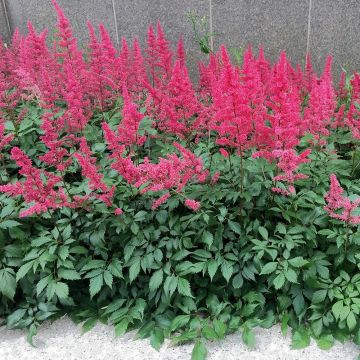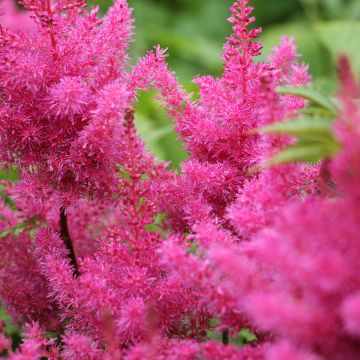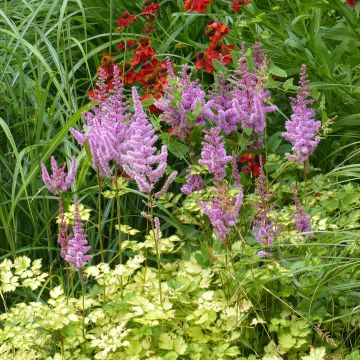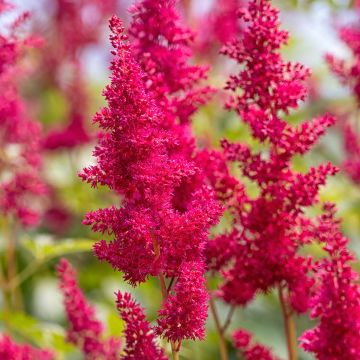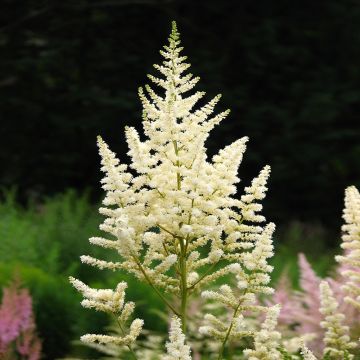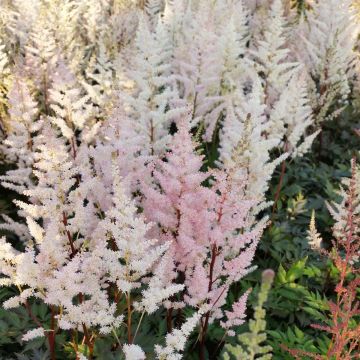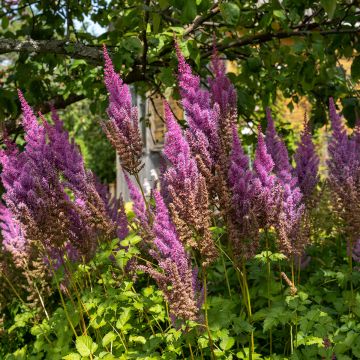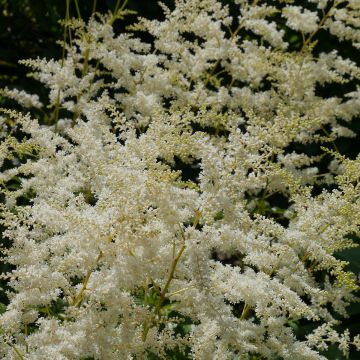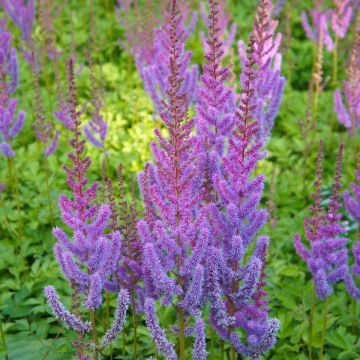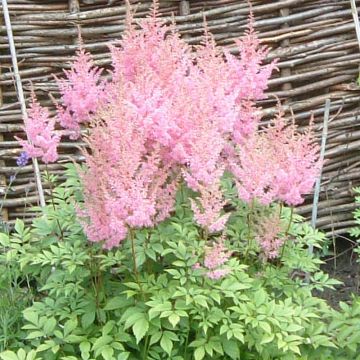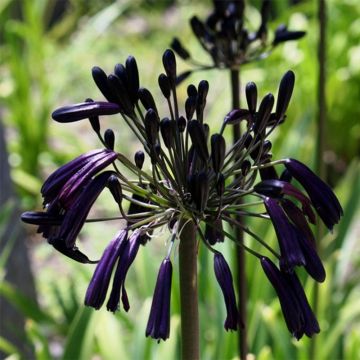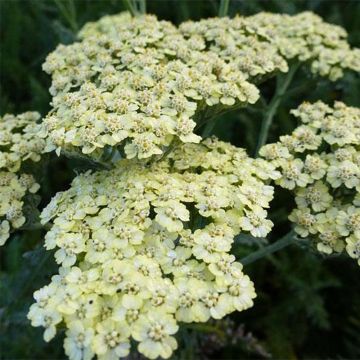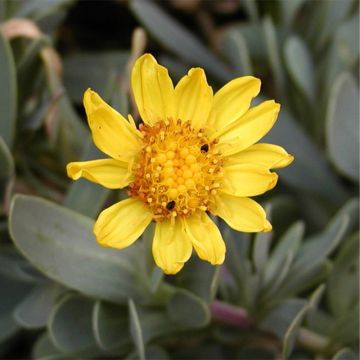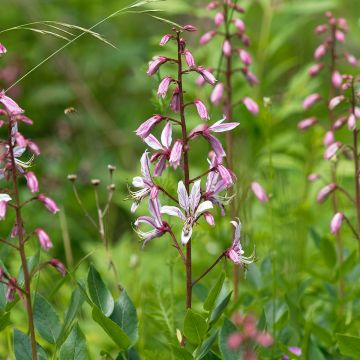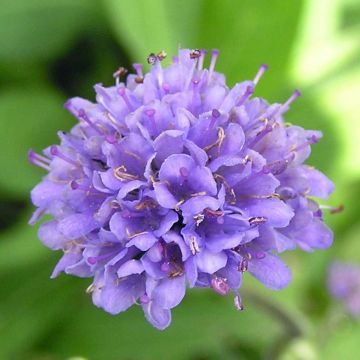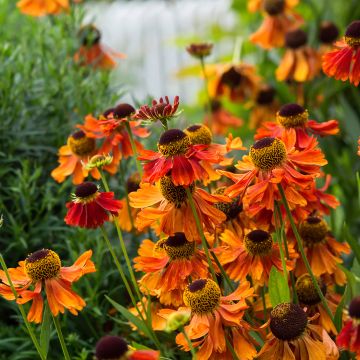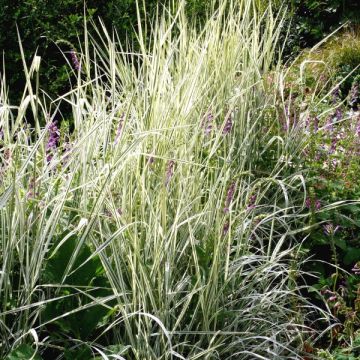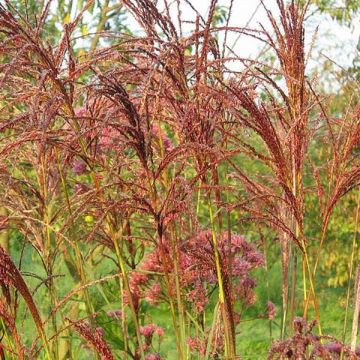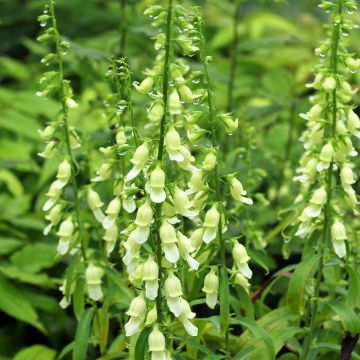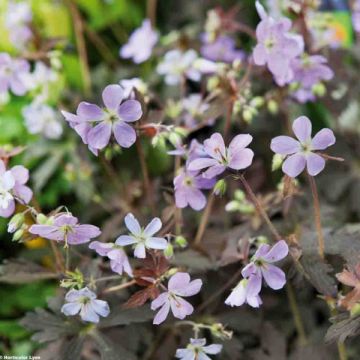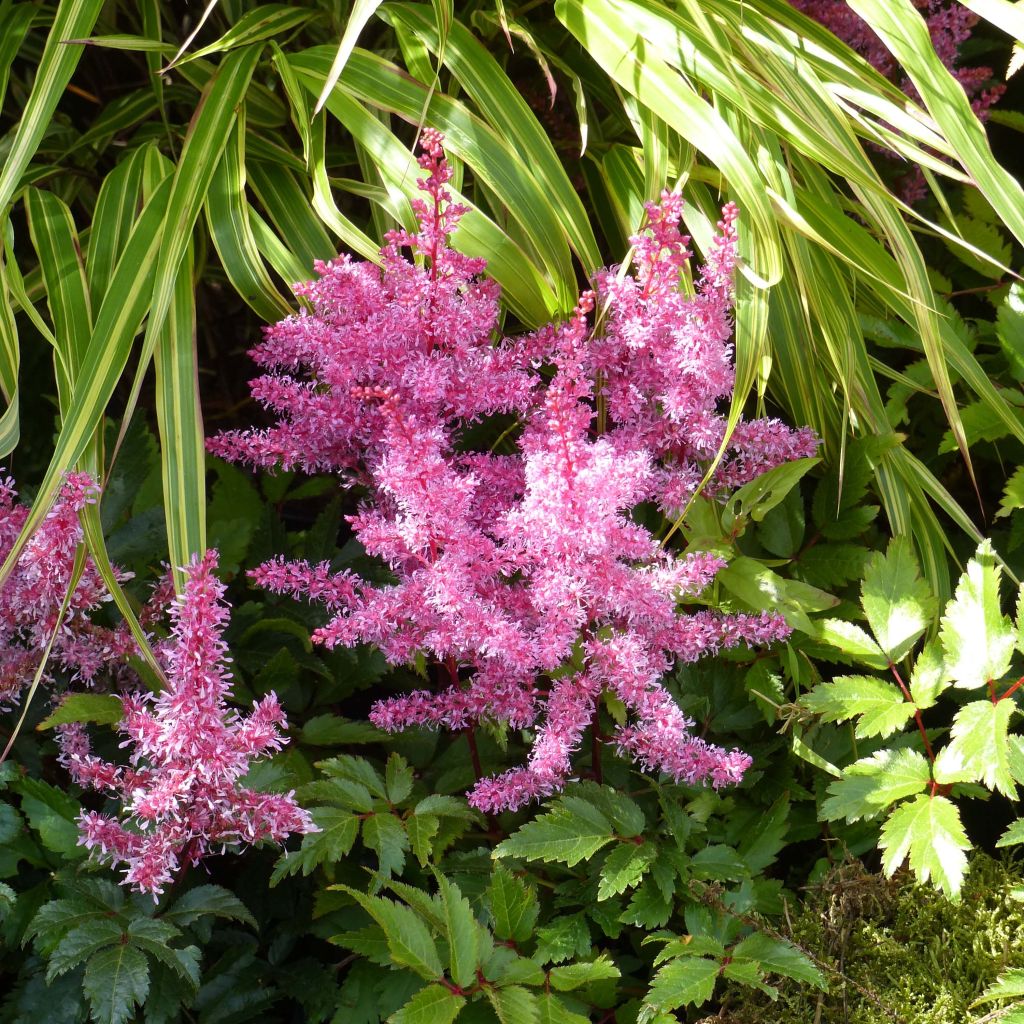

Astilbe Younique Ruby Red - False Spirea
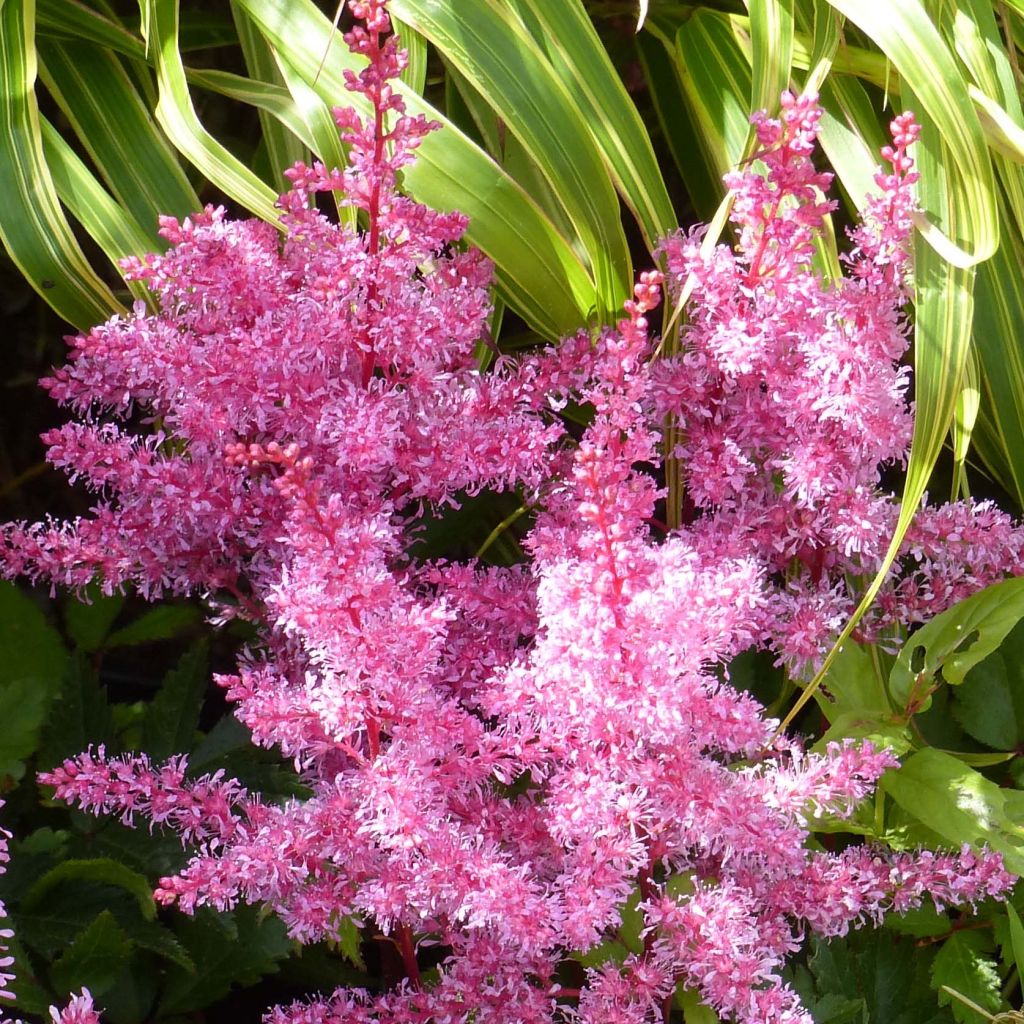

Astilbe Younique Ruby Red - False Spirea
Astilbe Younique Ruby Red - False Spirea
Astilbe Younique® Ruby Red
Astilbe, False Spirea
This item cannot be shipped to the selected country
Delivery charge from €5.90
Delivery charge from €5.90
More information
Schedule delivery date,
and select date in basket
This plant carries a 12 months recovery warranty
More information
We guarantee the quality of our plants for a full growing cycle, and will replace at our expense any plant that fails to recover under normal climatic and planting conditions.
From €5.90 for pickup delivery and €6.90 for home delivery
Express home delivery from €8.90.
From €5.90 for pickup delivery and €6.90 for home delivery
Express home delivery from €8.90.

Does this plant fit my garden?
Set up your Plantfit profile →
Description
Astilbe Younique Ruby Red is part of a group of recent hybrids derived from the Chinese Astilbe, selected for their very compact habit, generous and early flowering, disease resistance and moderate moisture requirements. Its dense and beautiful red-pink flower plumes bloom abundantly in early summer, above modest but finely cut foliage. This lovely perennial plant adds charm to flower pots and shaded areas of the garden, in ordinary soil that does not dry out.
Astilbe chinensis, from the saxifragaceae family, originates from China, Korea, and eastern Siberia. It is a rhizomatous and herbaceous perennial plant that is native to moist and fertile soils, although it requires less water than other species. The 'Younique' series of Astilbes was developed by Dutch breeder Jan Verschoor. They also carry genes from Astilbe japonica, a close relative native to Japan.
Small 'Younique Red' or Ruby Red' Astilbe slowly forms a mound of foliage that somewhat resembles a fern. This cushion-shaped clump consists of a cluster of leafy stems that do not exceed 25 cm (10in) high with a spread of 35 cm (14in). The slightly arching stems bear compound, medium green, shiny leaves with grey highlights, divided into 3 more or less deeply toothed, hairy leaflets. In moderate climates, 'Ruby Red' starts flowering between late May and early June and ends in July. It has abundant, long, feathery, branched spikes of tightly packed tiny flowers, almost disproportionate to the foliage. Their intense pink-red colour is redder when in bud and lightens slightly in bloom and at the end of flowering. It is a deciduous, very hardy plant whose above-ground vegetation disappears in winter and regrows in spring.
This 'Younique Ruby Red' Astilbe, with its modest size, graceful appearance, and a flowering display as massive as it is richly coloured, fits beautifully in a lovely pot on the terrace, or along the edges of flower beds, paired with its lovely shade companions such as ferns and Hostas. Its flower plumes bring a beautiful touch of colour to woodland They enliven north-east facing facades alongside Hydrangeas and lend a unique charm to the surroundings of water features, which serve as their mirror. Planted in ribbons, Younique Astilbes highlight shaded pathways alongside Lilyturf and saxifrages. The fern-like foliage contrasts beautifully with their opulent neighbours, such as Hostas or rhubarb, while their feathery flowering perfectly complements persicarias or bugbanes. Younique Astilbes can tolerate exposure to filtered sunlight and require consistently moist soil; they are robust and require very little maintenance.
Report an error about the product description
Astilbe Younique Ruby Red - False Spirea in pictures
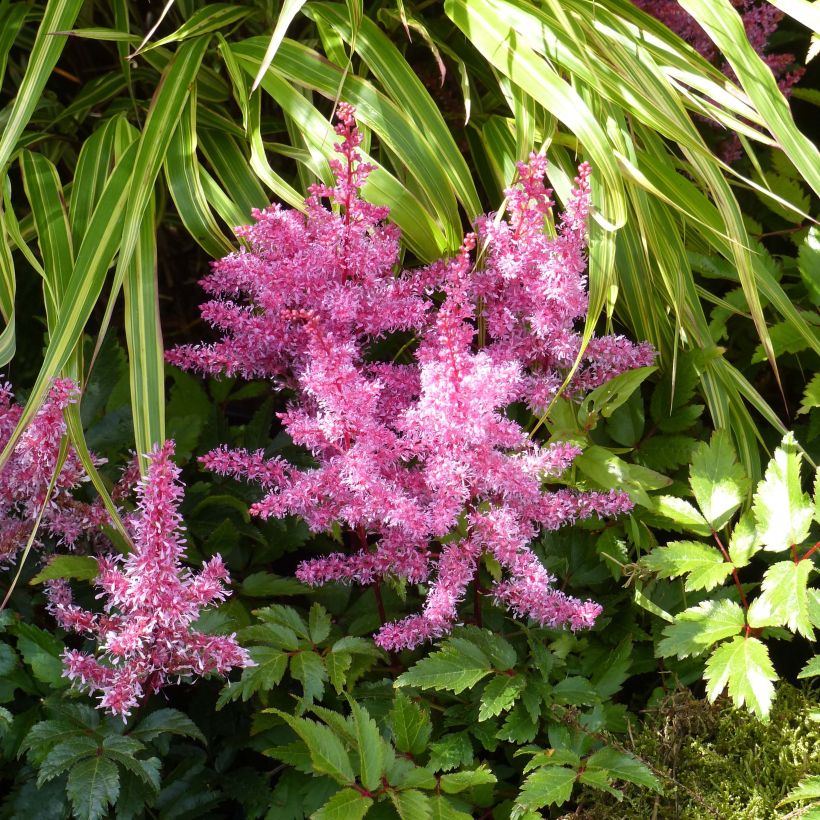

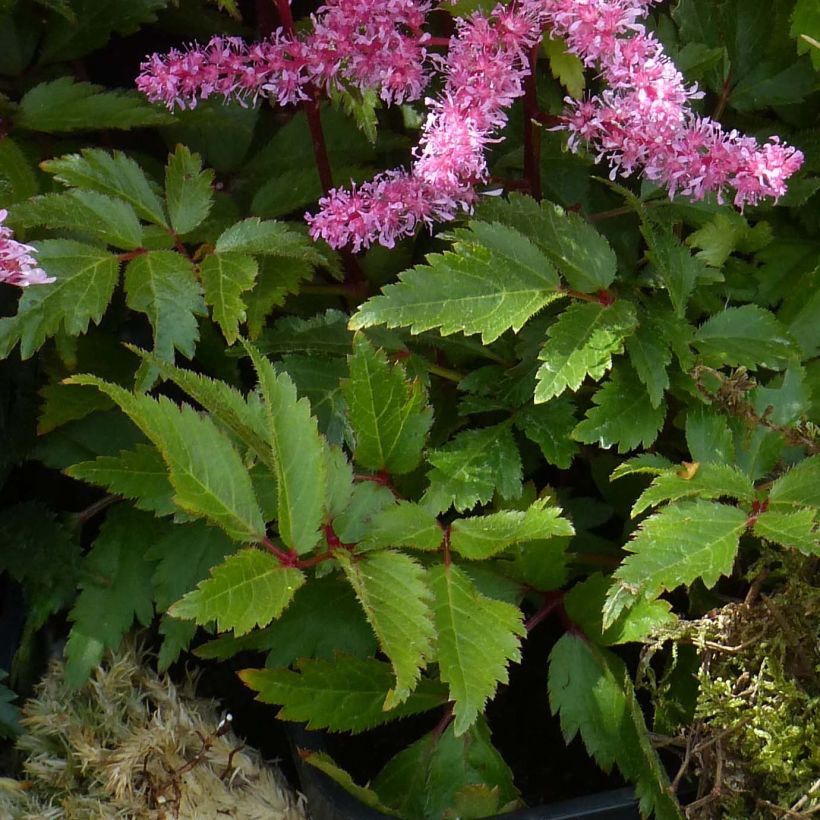

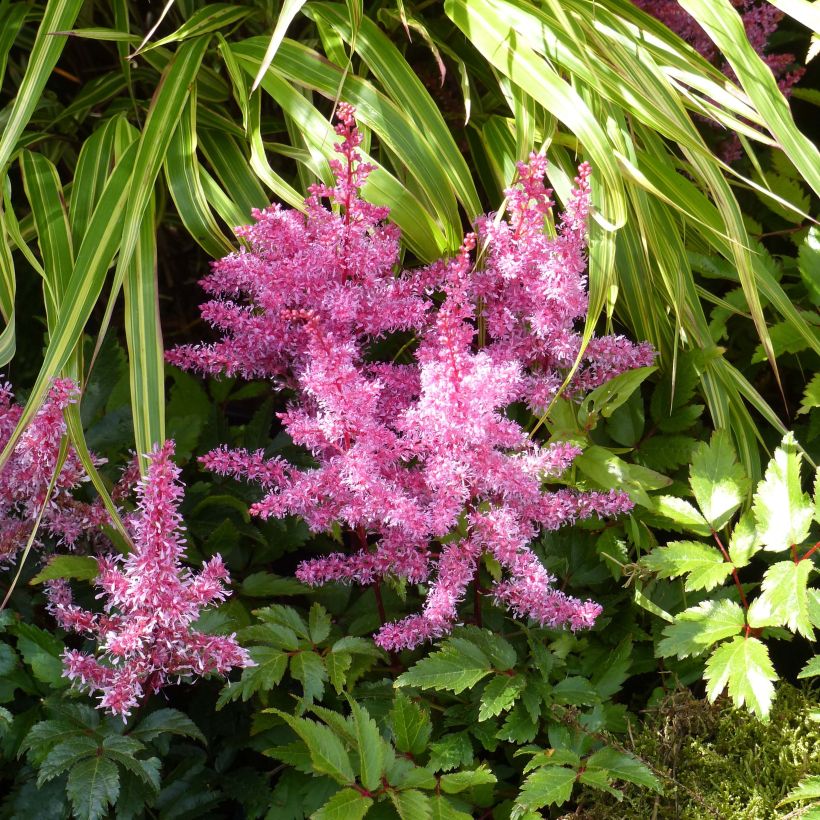

Flowering
Foliage
Plant habit
Botanical data
Astilbe
Younique® Ruby Red
Saxifragaceae
Astilbe, False Spirea
Cultivar or hybrid
Other Astilbe - False Goatsbeard
Planting and care
Astilbe Younique Ruby Red prefers to be planted in moist to wet soil, in a semi-shaded location. It will tolerate soil that is normally moist, but not dry, and dappled sun. It does not tolerate chalky soils well and prefers soil that is rich in humus and leaf compost. You can add compost in spring or a fertiliser rich in potash to promote abundant flowering. It does not mind the cold and is perfectly hardy down to at least -20°C (1°F). It is not prone to diseases and has few natural enemies. After flowering, you can cut back the faded stems to allow the clump to regenerate.
Planting period
Intended location
Care
-
, onOrder confirmed
Reply from on Promesse de fleurs
Summer flowering perennials
Haven't found what you were looking for?
Hardiness is the lowest winter temperature a plant can endure without suffering serious damage or even dying. However, hardiness is affected by location (a sheltered area, such as a patio), protection (winter cover) and soil type (hardiness is improved by well-drained soil).

Photo Sharing Terms & Conditions
In order to encourage gardeners to interact and share their experiences, Promesse de fleurs offers various media enabling content to be uploaded onto its Site - in particular via the ‘Photo sharing’ module.
The User agrees to refrain from:
- Posting any content that is illegal, prejudicial, insulting, racist, inciteful to hatred, revisionist, contrary to public decency, that infringes on privacy or on the privacy rights of third parties, in particular the publicity rights of persons and goods, intellectual property rights, or the right to privacy.
- Submitting content on behalf of a third party;
- Impersonate the identity of a third party and/or publish any personal information about a third party;
In general, the User undertakes to refrain from any unethical behaviour.
All Content (in particular text, comments, files, images, photos, videos, creative works, etc.), which may be subject to property or intellectual property rights, image or other private rights, shall remain the property of the User, subject to the limited rights granted by the terms of the licence granted by Promesse de fleurs as stated below. Users are at liberty to publish or not to publish such Content on the Site, notably via the ‘Photo Sharing’ facility, and accept that this Content shall be made public and freely accessible, notably on the Internet.
Users further acknowledge, undertake to have ,and guarantee that they hold all necessary rights and permissions to publish such material on the Site, in particular with regard to the legislation in force pertaining to any privacy, property, intellectual property, image, or contractual rights, or rights of any other nature. By publishing such Content on the Site, Users acknowledge accepting full liability as publishers of the Content within the meaning of the law, and grant Promesse de fleurs, free of charge, an inclusive, worldwide licence for the said Content for the entire duration of its publication, including all reproduction, representation, up/downloading, displaying, performing, transmission, and storage rights.
Users also grant permission for their name to be linked to the Content and accept that this link may not always be made available.
By engaging in posting material, Users consent to their Content becoming automatically accessible on the Internet, in particular on other sites and/or blogs and/or web pages of the Promesse de fleurs site, including in particular social pages and the Promesse de fleurs catalogue.
Users may secure the removal of entrusted content free of charge by issuing a simple request via our contact form.
The flowering period indicated on our website applies to countries and regions located in USDA zone 8 (France, the United Kingdom, Ireland, the Netherlands, etc.)
It will vary according to where you live:
- In zones 9 to 10 (Italy, Spain, Greece, etc.), flowering will occur about 2 to 4 weeks earlier.
- In zones 6 to 7 (Germany, Poland, Slovenia, and lower mountainous regions), flowering will be delayed by 2 to 3 weeks.
- In zone 5 (Central Europe, Scandinavia), blooming will be delayed by 3 to 5 weeks.
In temperate climates, pruning of spring-flowering shrubs (forsythia, spireas, etc.) should be done just after flowering.
Pruning of summer-flowering shrubs (Indian Lilac, Perovskia, etc.) can be done in winter or spring.
In cold regions as well as with frost-sensitive plants, avoid pruning too early when severe frosts may still occur.
The planting period indicated on our website applies to countries and regions located in USDA zone 8 (France, United Kingdom, Ireland, Netherlands).
It will vary according to where you live:
- In Mediterranean zones (Marseille, Madrid, Milan, etc.), autumn and winter are the best planting periods.
- In continental zones (Strasbourg, Munich, Vienna, etc.), delay planting by 2 to 3 weeks in spring and bring it forward by 2 to 4 weeks in autumn.
- In mountainous regions (the Alps, Pyrenees, Carpathians, etc.), it is best to plant in late spring (May-June) or late summer (August-September).
The harvesting period indicated on our website applies to countries and regions in USDA zone 8 (France, England, Ireland, the Netherlands).
In colder areas (Scandinavia, Poland, Austria...) fruit and vegetable harvests are likely to be delayed by 3-4 weeks.
In warmer areas (Italy, Spain, Greece, etc.), harvesting will probably take place earlier, depending on weather conditions.
The sowing periods indicated on our website apply to countries and regions within USDA Zone 8 (France, UK, Ireland, Netherlands).
In colder areas (Scandinavia, Poland, Austria...), delay any outdoor sowing by 3-4 weeks, or sow under glass.
In warmer climes (Italy, Spain, Greece, etc.), bring outdoor sowing forward by a few weeks.

































